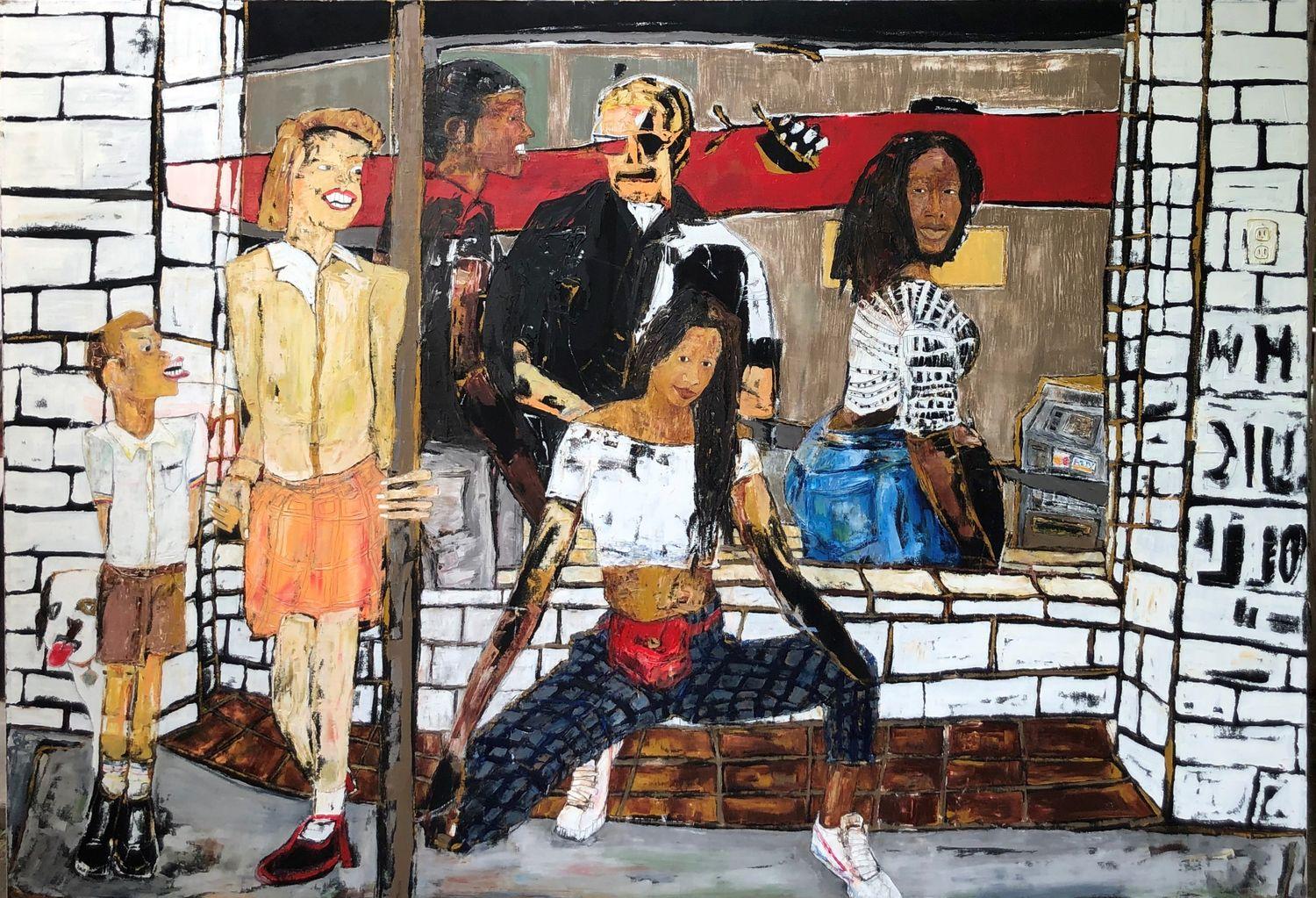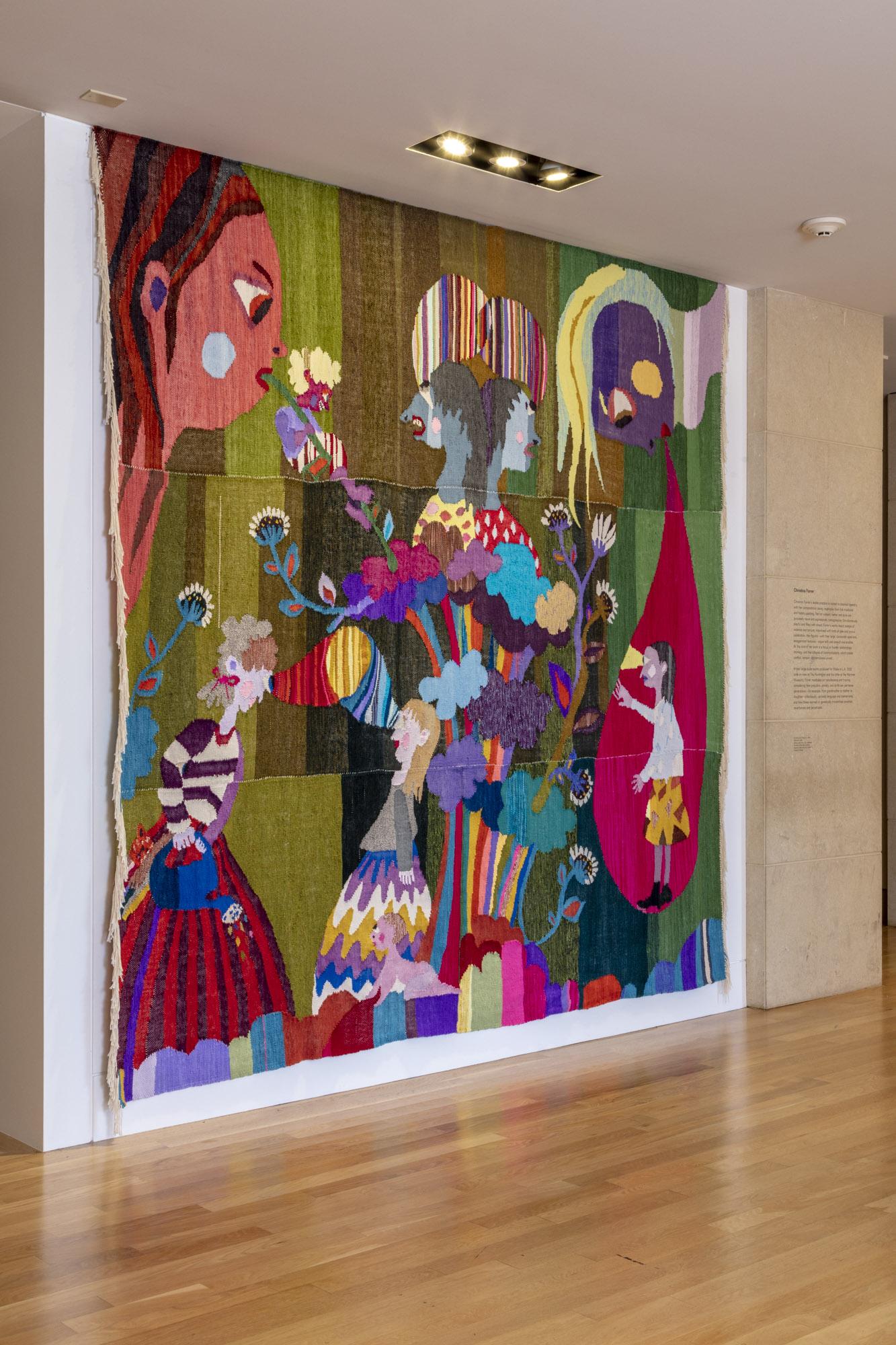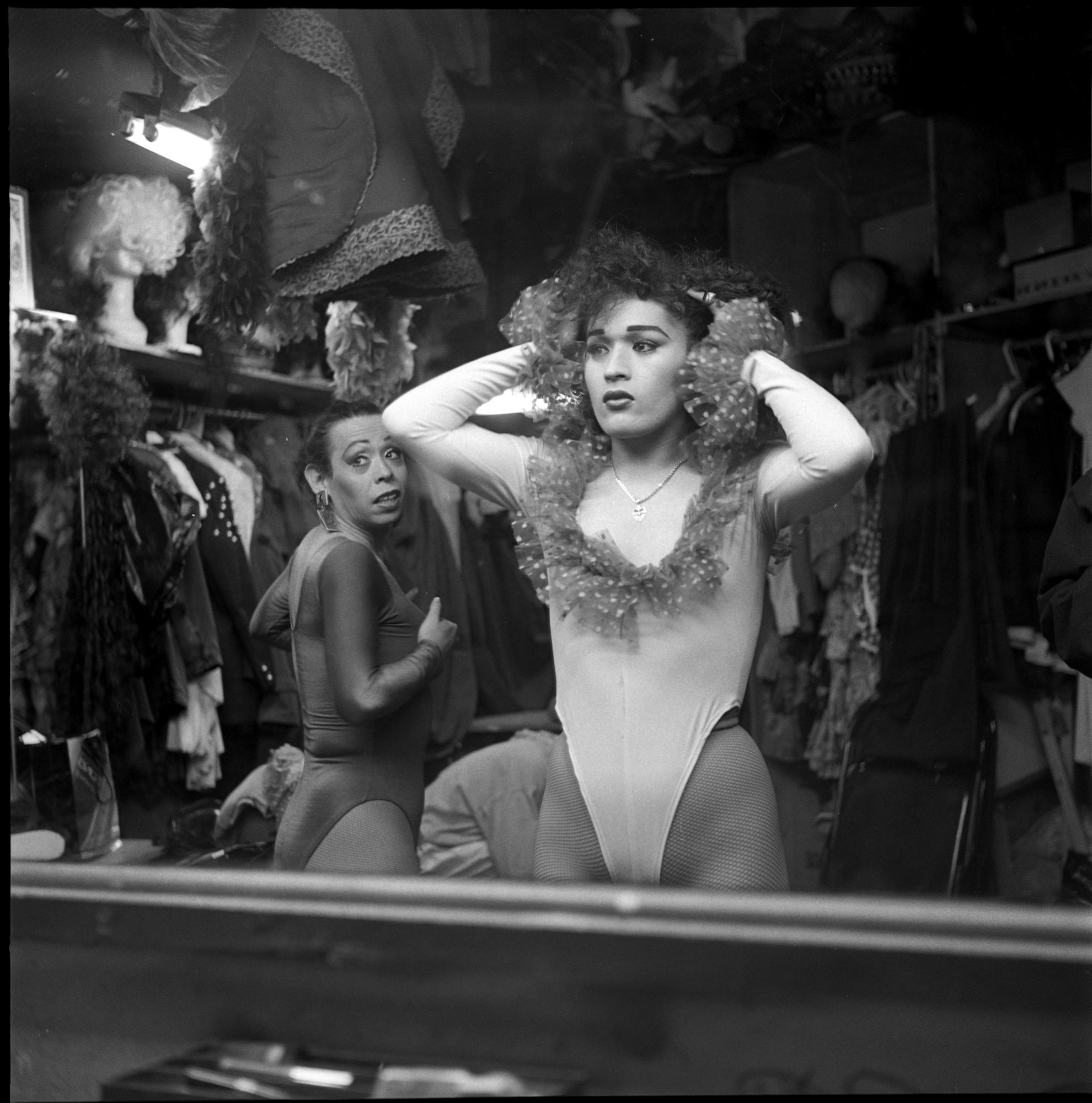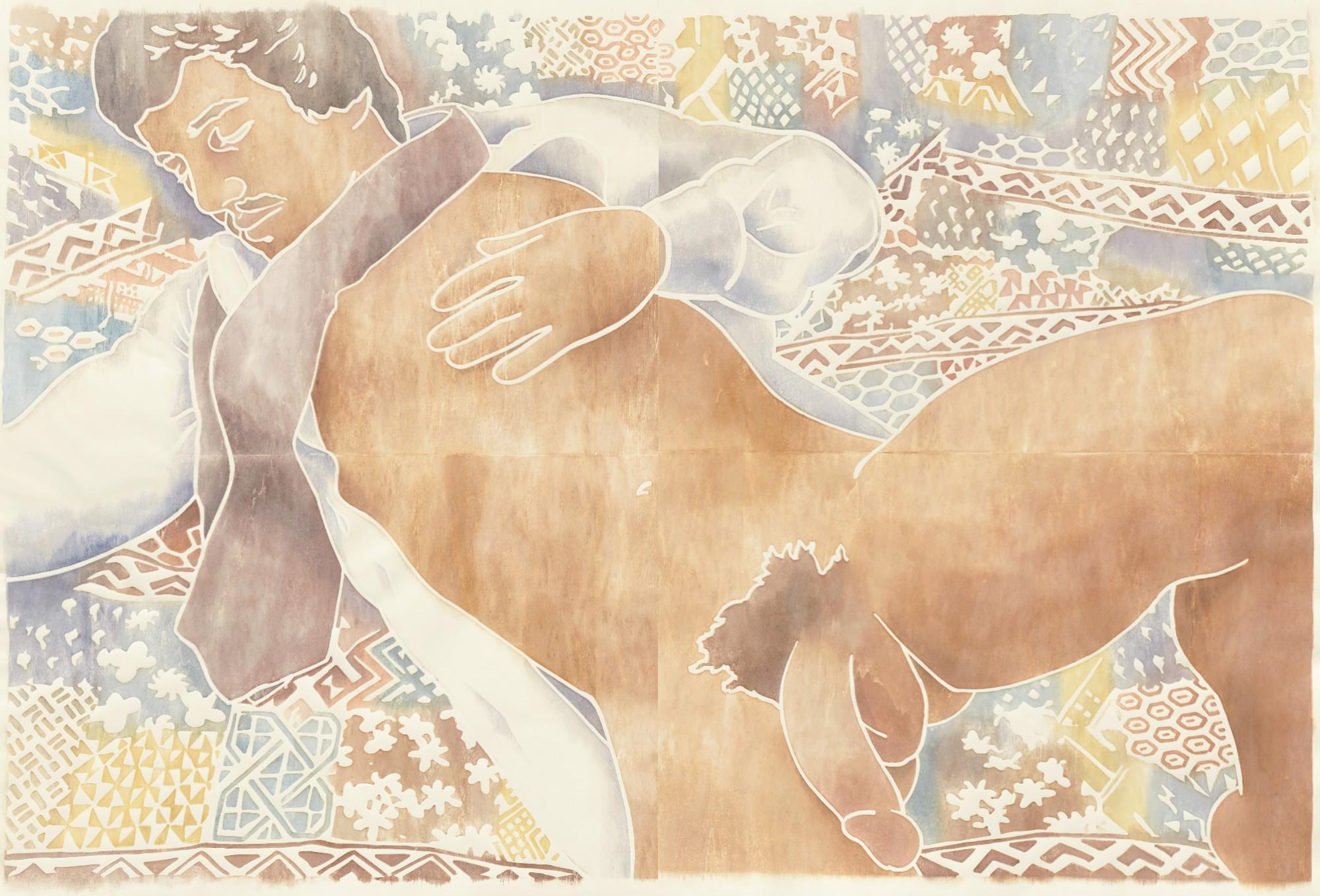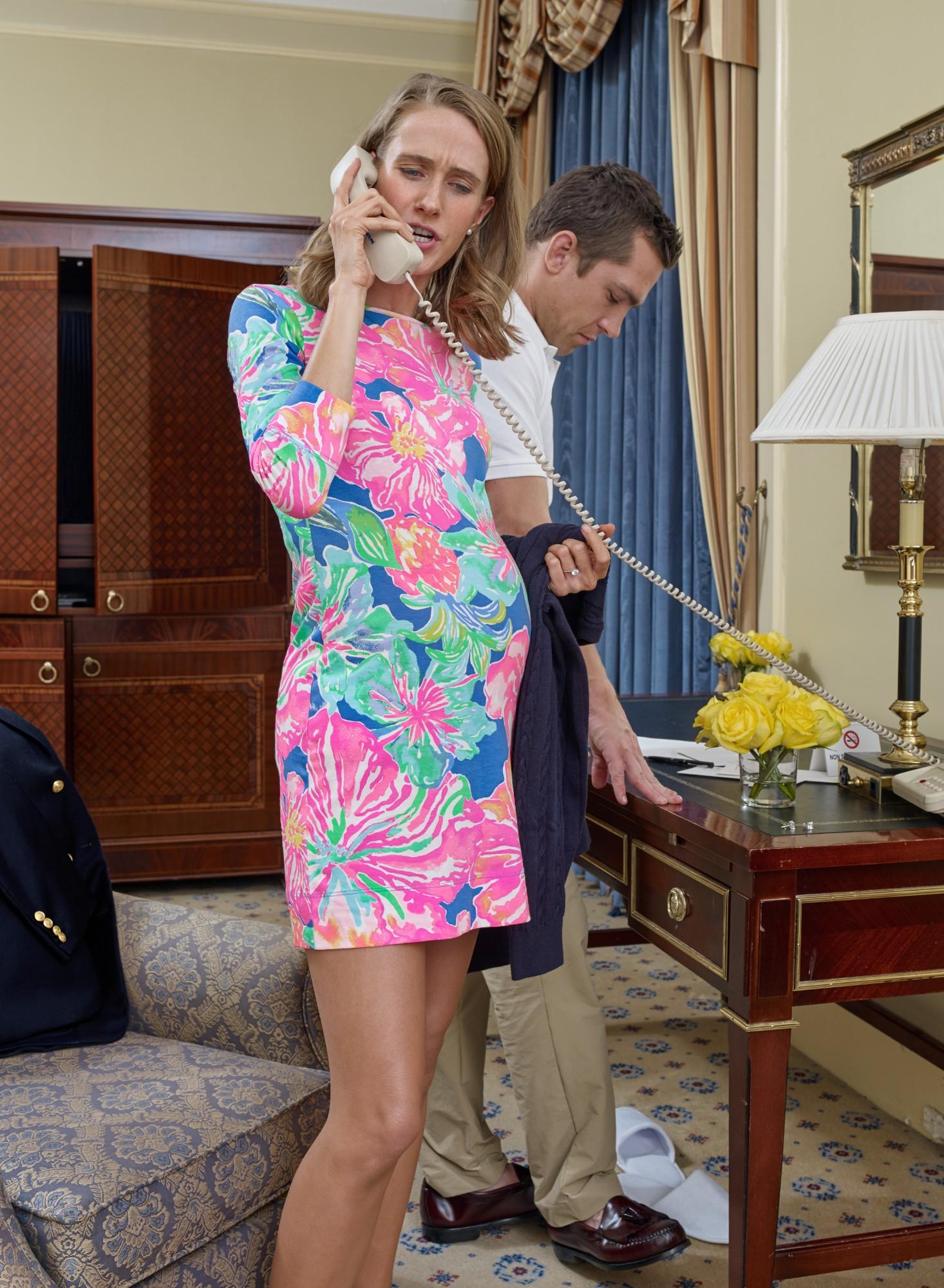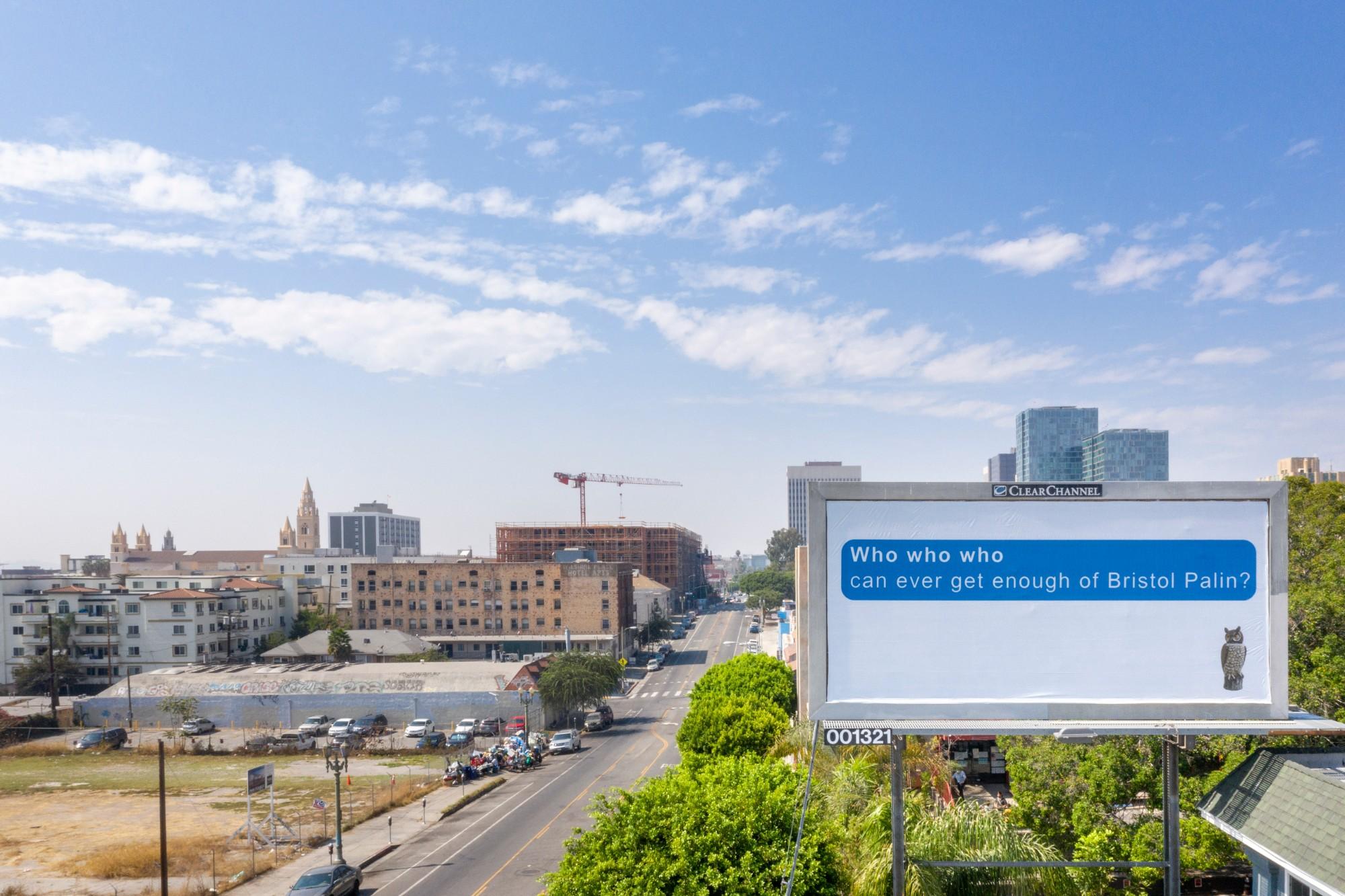Included are Aria Dean, Harmony Holiday, Larry Johnson, Kahlil Joseph, Brandon D. Landers, Monica Majoli, and Reynaldo Rivera, to name a few. Rather than exhibit a survey of the city’s talent as it has in the past, Made in L.A. 2020 aims to be a group show organized around three concepts: entertainment, horror, and the fourth wall.
“We built this exhibition with the architecture that we pulled out of the conversations we had in the artists' studio,” says Meckler of the disparate principles that function as a loose organizing construct. But whatever their shortcomings as architects, they make up for in taste with a show that is always compelling.
Buck Ellison’s videos greet visitors in the Hammer lobby, anodyne ‘advertisements’ done in the generic esthetic employed by a bank or pharmaceutical company depicting archetypes of white privilege and white masculinity.




